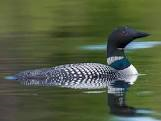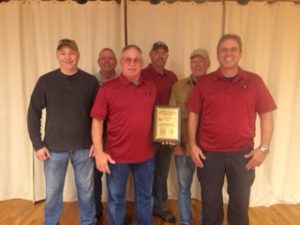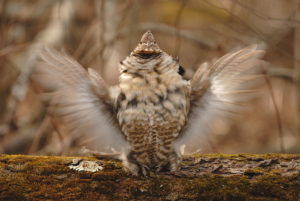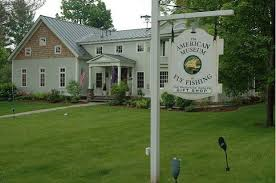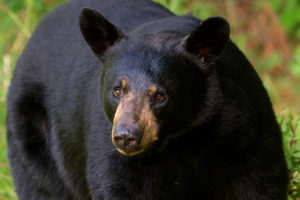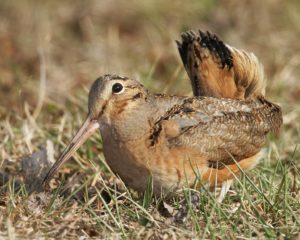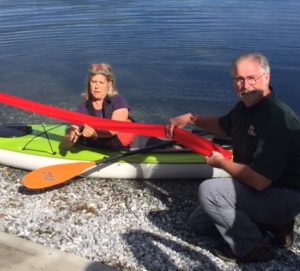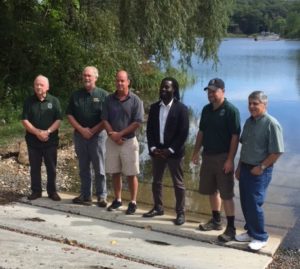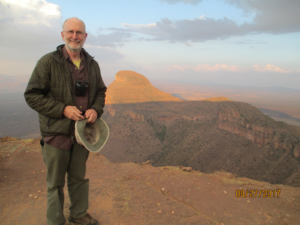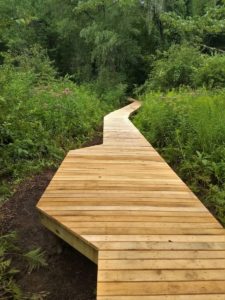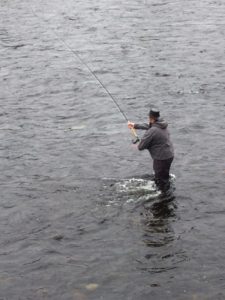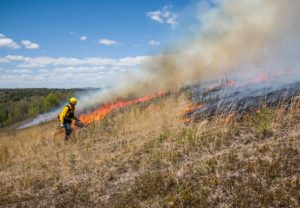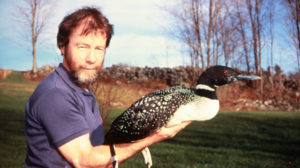Last Tuesday, Lenox resident George L. (Gige) Darey, former board member and chairman of the Massachusetts Fisheries and Wildlife Board, received the Francis W. Sargent Conservation Award from the Fisheries and Wildlife Board for his contributions to the sporting community and to the conservation of the Commonwealth’s natural resources. The Sargent Award honors the former governor and noted conservationist who directed the Massachusetts Division of Fisheries and Wildlife (MassWildlife) in 1963-64.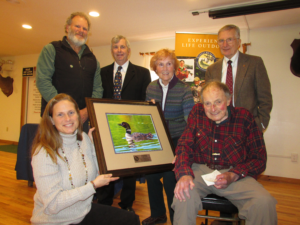
Darey, a lifelong angler and hunter, received the award – a framed photograph of
a loon by the late MassWildlife photographer Bill Byrne – at a ceremony held at
the Lenox Sportsmen’s Club. In addition, Senator Adam Hinds presented Darey with
a Senate citation honoring his award. The ceremony was attended by MassWildlife
Director Mark Tisa, Department of Fish and Game Commissioner Ron Amidon as well
as representatives from state environmental agencies, sporting and other local
conservation organizations, previous Sargent award attendees and family members.
“I have been following conservation issues all my life and served in the Fisheries and Wildlife Board (F&W) with Gige Darey since 1986,” said Board Vice President Mike Roche. “No individual I know has ever had a greater positive impact or contributed more to the natural resources of Massachusetts in so many critical ways. “
“I have been lucky to be involved for so many years with something I love. It has been a fun ride,” said Darey, “I have been even more fortunate to have worked with and get to know so many people and organizations with a passion for our environment. Words can’t express how much this day and what you all mean to me.”
Representing the Western Wildlife District on the F&W Board, Gige served for 38 years, 35 of which he was chairman, until December of 2016. He served under eight different governors and worked with four MassWildlife Directors.
During his tenure on the F&W Board, Gige was instrumental in generating public support for important wildlife issues including funding of the Natural Heritage and Endangered Species Program; the establishment of the Wildlands Conservation Stamp, a $5 assessment to the sale of hunting and fishing licenses dedicated exclusively to the protection of wildlife habitat open to hunting, fishing and other wildlife related recreation; and science-based management of wildlife and wildlife habitat. He was honored by the F&W Board in 2004 when the Housatonic Valley Wildlife Management Area in Lenox was renamed the George Darey Wildlife Management Area.
Darey, a retired teacher has been a long-time environmental advocate for the Berkshires since returning from military service. He served on the first Lenox Conservation Commission as well as on the Board of the Massachusetts Association of Conservation Commissions and served on the Lenox Board of Selectmen. Darey has a BA from the State University of New York (Plattsburg) and an MS from the University of Massachusetts.
His leadership role in environmental stewardship was recognized in 1996 when he was presented a U.S. Environmental Protection Agency Award. He is a board member of the Berkshire Natural Resources Council, Green Berkshires, and of Sportsmen for Land Preservation. He is also a founding member of the Housatonic River Initiative, the Massachusetts Outdoor Heritage Foundation, Lenox Land Trust and was instrumental in forging forestland protection and management partnerships between MassWildlife and the Nature Conservancy, the Ruffed Grouse Society, and the National Wild Turkey Federation.
He was also heavily involved with the Edith Wharton House, Shakespeare and Company, coached cross country ski teams, was a guide for Canyon Ranch and started a high school fish and game club.
Established in 2000 by the F&W Board, Darey is the 14th recipient of the Sargent award and is the 3rd person from our area to receive it. The late Ted Giddings received it in 2003 for his many years of writing the Our Berkshires’ outdoor column for the Berkshire Eagle. In 2016, the Berkshire Natural Resources Council received it for its near 50 years of protecting the open spaces of Berkshire County, owning and managing over 10,000 acres and protecting more than that through conservation restrictions.
Private/Public Partnership Results in Enhanced Access to Three Mile Pond
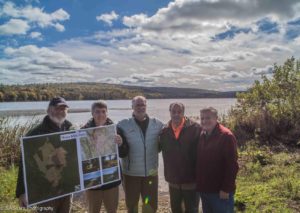 Board members of the Massachusetts Outdoor Heritage Foundation (MOHF) were joined by officials from MassWildlife and the Department of Fish and Game (DFG) in mid-October to mark the completion of a joint recreational public access project at Three Mile Pond Wildlife Management Area (WMA) on Brush Hill Road in Sheffield.
Board members of the Massachusetts Outdoor Heritage Foundation (MOHF) were joined by officials from MassWildlife and the Department of Fish and Game (DFG) in mid-October to mark the completion of a joint recreational public access project at Three Mile Pond Wildlife Management Area (WMA) on Brush Hill Road in Sheffield.
An existing access at Three Mile Pond was improved and a new gravel parking lot and pond access was created on the upper end of the pond. In addition, two new signs were installed noting the public access points and available opportunities for waterfowl hunting, fishing, and wildlife viewing.
Attendees were given an overview of the completed project by Andrew Madden, MassWildlife Western District Supervisor. Three Mile Pond is approximately 160 acres in size with a large area of wetlands. It is part of a 1000+-acre WMA managed by MassWildlife for wildlife, habitat and wildlife-related recreation. The WMA is stocked with pheasants in the fall and mowed annually to maintain field and shrubland habitat for many kinds of wildlife.
“The Foundation is excited to enhance access to Three Mile Pond for hunters, paddlers, wildlife enthusiasts, and most importantly future generations of outdoorspeople—an activity which aligns with the Foundation’s mission,” said MOHF board member and former Secretary of Environmental Affairs Bob Durand. “It was great to partner with Ducks Unlimited (DU) and MassWildlife on this important project.”
“We truly appreciate the commitment of DU and the Massachusetts Outdoor Heritage Foundation who provided the funds to make this project a reality,” said MassWildlife Director Mark Tisa. “Access to the outdoors is in high demand in Massachusetts and this project helps address the outdoor community’s needs.”
“The Department of Fish and Game is happy to see the partnerships with NGOs such as the Outdoor Heritage Foundation and Ducks Unlimited continue to grow,” said Department of Fish and Game Commissioner Ron Amidon. “Anytime we can help with access projects to support outdoor recreation, our engineering staff from the Office of Fishing and Boating Access is pleased to contribute.”
“DU would like to thank the partners for advancing such a great access project,” said Sarah Fleming, DU Manager of Conservation Programs in the North Atlantic. “We are pleased to be able to support our partners, volunteers and outdoor enthusiasts by helping increase access to public recreational areas that all users can enjoy. We look forward to continuing to work with the Massachusetts Outdoor Heritage Foundation and MassWildlife on other projects that will not only benefit waterfowl and other wetlands wildlife, but will also benefit people.”
(Most of the above Darey and Three Mile Pond information came from MassWildlife press releases.)
Multi-Gun Event
The Lee Sportsmen’s Association, 565 Fairview Street, Lee, is hosting a Fall Finale Multi-Gun event next Sunday, November 11. It is a 2-gun (pistol/shotgun) event with 6 stages including IDPA, USPSA and Action Steel. There will be a safety briefing at 9:45 am and the event will start at 10:00am. Participants will need at least 30 rounds shotgun and 150 rounds pistol. The event, which is open to members and the public, costs $25 with lunch available for purchase. For more information, contact Shawn Sullivan at ssullee@icloud.com.
Bear Hunting
The Second Season of bear hunting opens tomorrow and runs through November 24. During this season only rifle, muzzleloader and archery hunting is allowed (no pistols or shotguns). A hunter orange hat is required on WMAs stocked with pheasant or quail during the pheasant or quail season.

